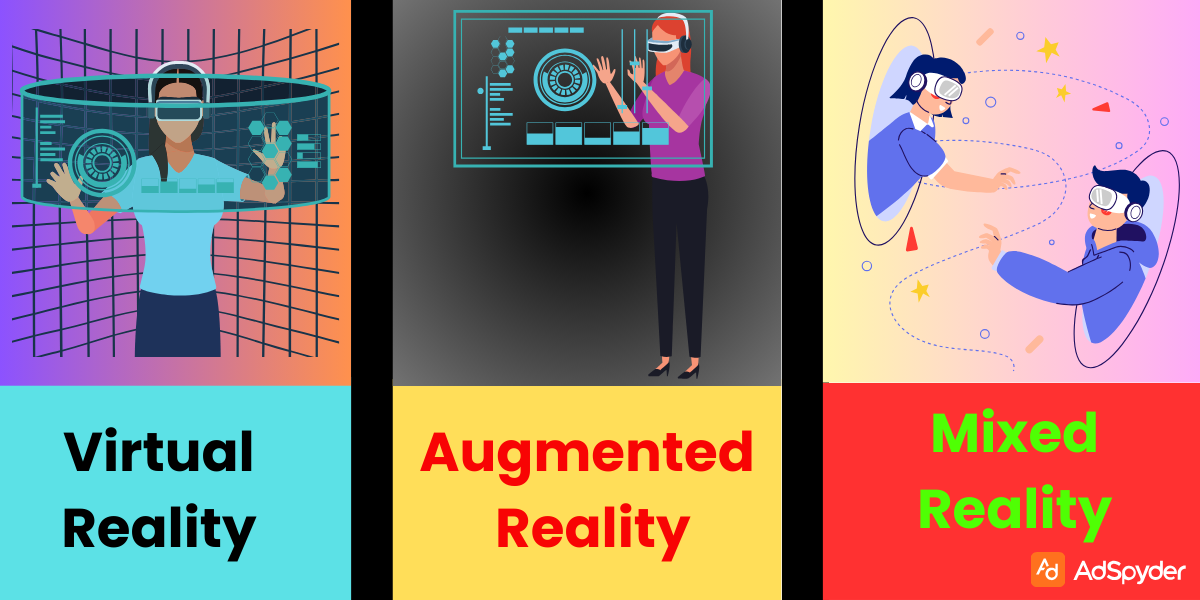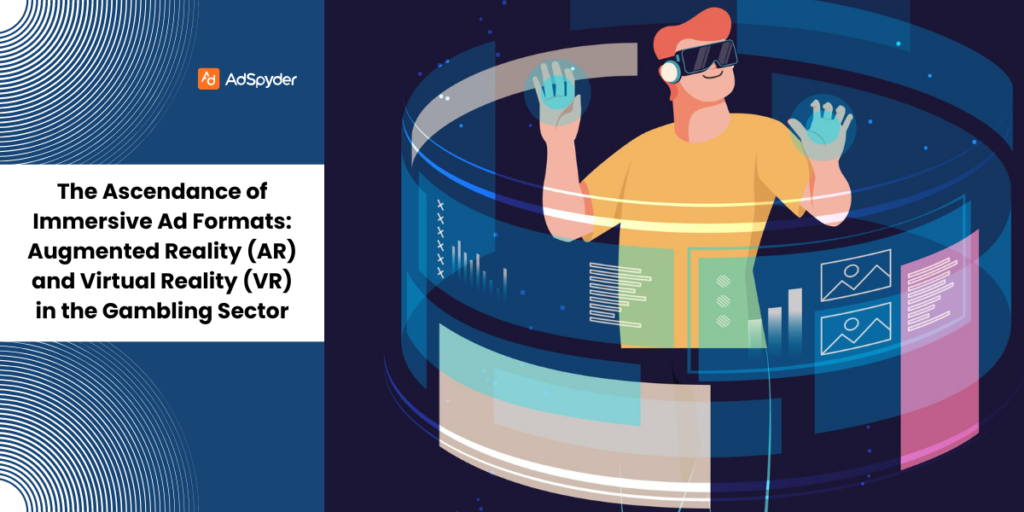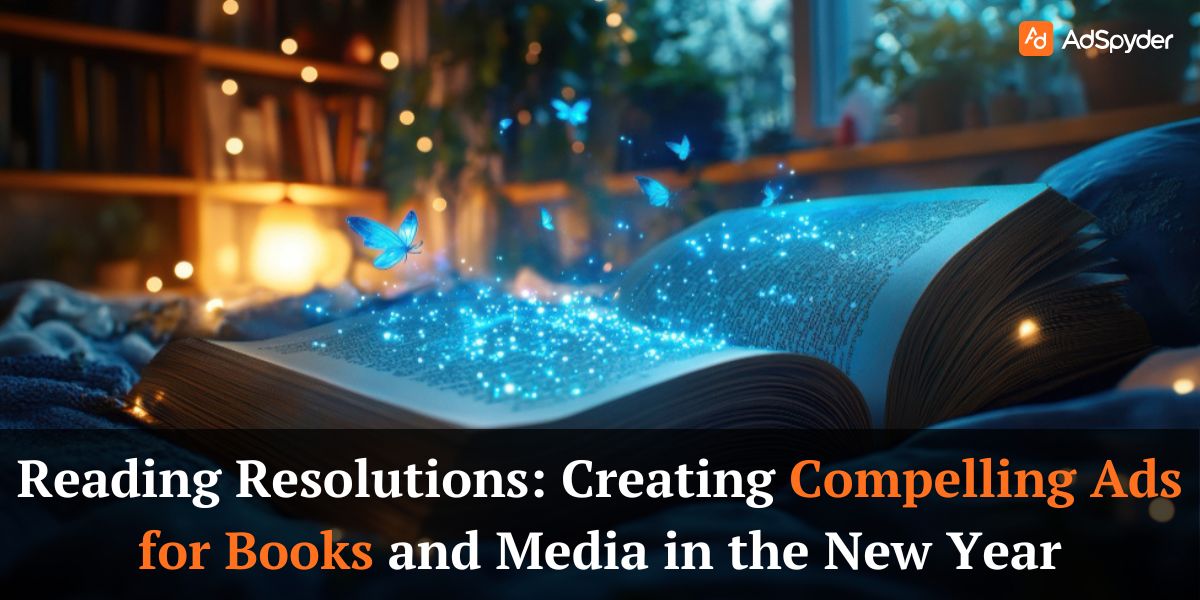Ready to Elevate your Marketing Strategy?
The realm of online gambling is in a perpetual state of metamorphosis, with advertisers continuously striving to capture the attention of audiences and amplify brand recognition. In recent years, there has been a big increase in more immersive types of advertising, like Augmented Reality (AR) and Virtual Reality (VR). This, along with augmented reality in online gambling, has brought a significant change to how the gambling industry advertises.
These avant-garde technologies have ushered in a new era of user engagement, offering interactive and memorable encounters for players. In this article, we will delve into the burgeoning influence of immersive ad campaigns within the online betting sector. We’ll explore the significance of augmented reality in online gambling advertising, their applications, and the potential they hold in reshaping the industry.
An Insight into AR and VR Applications within the Betting Industry
Augmented Reality and Virtual Reality are causing a big change in how gambling companies engage with their audience. AR adds digital things to the real world, making the user’s surroundings more interesting with interactive content. Conversely, VR plunges users into a simulated realm, immersing them in virtual landscapes and experiences. Both these technologies have found invaluable roles in the realm of betting.
- AR empowers gambling advertisers to craft interactive ad experiences that harmoniously merge with the user’s surroundings. For example, users can virtually sample casino games or place bets in their immediate physical setting, augmenting their sense of participation and entertainment.
- VR, on the other hand, offers an unprecedented level of immersion by transporting users into virtual casinos, sports events, or exotic destinations. This heightened engagement empowers betting platforms to deliver unique experiences that resonate deeply with their target demographic, ultimately fostering brand loyalty and user retention.
Title: Types of AR Advertising
| Type | Description | Example |
|---|---|---|
| AR Filters and Lenses | Interactive filters for social media platforms. | Snapchat filters, Instagram AR effects |
| AR Product Try-Ons | Virtual try-on for products like clothes and accessories. | Virtual makeup try-on, virtual fitting room |
| AR Games | Gamified advertising experiences. | AR treasure hunts, branded AR games |
| AR Portals | Immersive portals to different locations or experiences. | Virtual showrooms, destination tours |
| AR Ads in Apps | AR experiences within mobile applications. | In-app AR shopping features |
Advantages of Immersive Ads for Enhanced User Engagement and Brand Recognition

Immersive ad formats like AR and VR offer several benefits for gambling advertisers.
- First, they capture the user’s attention very effectively, igniting excitement and involvement. Interactive AR experiences coax users to actively engage with the ad content, while VR campaigns offer immersive storytelling that elicits an emotional response from users.
- Secondly, immersive ads cultivate unforgettable experiences that etch a lasting imprint in the user’s memory. Players are more inclined to recollect and share their encounters with others, amplifying word-of-mouth social proof marketing and augmenting brand recognition.
- Lastly, these ad formats set gambling platforms apart from their competitors, establishing them as avant-garde and forward-thinking brands. The adoption of cutting-edge technologies positions betting sites as pioneers of innovation, thereby enticing tech-savvy audiences seeking distinctive and enthralling experiences.
AR and VR Technologies in Gambling Advertising
Technology empowers augmented reality in online gambling to provide users with personalized and interactive experiences.
- For instance, users can employ their smartphones or other AR-enabled devices to scan physical objects, such as sports jerseys, to unlock exclusive betting offers associated with their preferred teams or players.
- Such personalized and context-aware advertising heightens user engagement and encourages users to explore betting opportunities further.
- Furthermore, AR filters or lenses bestow betting sites with the capability to offer entertaining and enjoyable experiences to users.
- Players can virtually experiment with different casino themes or adornments, introducing an element of gamification into the ad experience.
- These interactive components not only elevate user engagement but also stimulate social sharing, expanding the reach of the ad campaign.
While discussing the ascendance of immersive ad formats like augmented reality (AR) and virtual reality (VR) in the gambling sector, it’s worth noting the role of social proof in shaping ad effectiveness.
Virtual Reality Campaigns and Their Influence on User Perception
Virtual Reality campaigns wield a profound influence on how users perceive gambling brands. By transporting users into a virtual casino environment, betting sites can evoke the sensation of physically inhabiting a location. This can be a luxurious casino, sporting event, or poker tournament. This level of immersion elevates the user experience, making it more unforgettable and gratifying. This turns users into strong advocates for this online betting sites.
Additionally, VR ads can create a perception of exclusivity, as users feel as if they are partaking in an elite and privileged gaming atmosphere. This perception fosters brand loyalty and user retention, as users are more likely to revisit a platform that offers unique and premium experiences.
Spotlight on Successful AR and VR Gambling Ad Campaigns
Several gambling operators have already embraced AR and VR in their ad campaigns, reaping significant success in captivating their audience. VR in gambling advertising has redefined the way ads are run in the digital space. A prominent example is a VR-based tour of a virtual casino, enabling users to explore various gaming options and relish the thrill of being in a casino environment from the comfort of their homes.
For AR campaigns, personalized experiences are exceedingly effective in capturing users’ attention. For instance, a betting site can employ AR to overlay pertinent betting odds or statistics onto a live sports event, delivering a real-time and context-aware ad experience to users.
Strategies for Crafting Captivating Immersive Ad Creatives
To design compelling immersive ad campaigns, gambling advertisers should prioritize the creation of captivating creatives that resonate with users.
- Firstly, the ad experience must be user-centric, concentrating on delivering value and amusement to the user. Interactive elements, such as gamified features or personalized content, encourage users to actively engage with the ad.
- Secondly, storytelling emerges as a potent tool within immersive ad formats. Particularly, VR campaigns present opportunities for narrative-driven experiences that immerse users in a gripping storyline.
Constructing emotionally resonant narratives aids in establishing a deeper connection between users and the brand, elevating brand loyalty and advocacy.
Harnessing AR Filters or Lenses for Promoting Betting Platforms
AR filters or lenses have emerged as popular tools for engaging users on social media platforms.
- Betting sites can harness these filters to deliver entertaining experiences to users.
- For instance, users can utilize an AR filter to visualize themselves in diverse casino settings or sporting virtual poker-themed accessories.
By promoting these filters across video marketing for social media channels, betting platforms can allure new users and amplify brand visibility.
Virtual Casino Tours and Immersive VR Gambling Ads
Virtual casino tours serve as an effective strategy for showcasing the unique offerings of a betting site.
- By crafting a virtual replica of a physical casino, users can explore diverse gaming options, interact with dealers, and immerse themselves in the ambiance of a high-end casino.
- This style of VR ad campaign elevates the user experience.
It also fosters a sense of trust and transparency by allowing users to witness the actual gaming environment. This tactic is effective for promoting the brand messaging among its users.
Compatibility Issues and User Accessibility in AR/VR Ads
While AR and VR technologies present incredible potential, they come with challenges. These issues are device compatibility and user accessibility. VR ads typically necessitate specialized hardware, such as VR headsets, which may limit the ad’s reach to users who own such devices.
To combat this challenge, betting sites can offer alternative avenues for accessing VR content, such as through web-based VR experiences that do not mandate additional hardware. Moreover, by focusing on AR campaigns, a broader audience can partake in the augmented reality in online gambling ads through their smartphones or other AR-enabled devices. I tshould also be noted that the ads associated with online gambling warrants following responsible gambling rules for advertising. One needs to keep in mind to also fulfil ethical and moral obligations for the gambling ad campaigns.
User Accessibility in AR/VR Gaming
As AR/VR technologies advance, accessibility is becoming a critical focus to ensure all users can enjoy immersive gaming experiences, including online gambling.
- One key challenge is the cost of high-end devices like VR headsets, which may be prohibitive for some users.
- To overcome this, developers are optimizing AR/VR experiences for lower-spec devices like smartphones and tablets, offering broader access.
Device Flexibility
Many AR experiences are now designed to work on smartphones and tablets, ensuring that users without expensive VR headsets can still participate.
- Using mobile AR technology (e.g., Apple’s ARKit or Google’s ARCore), real-time betting information or game enhancements can be overlaid in the user’s real-world environment through their device.
Support for Disabilities
AR/VR platforms are beginning to integrate accessibility features for users with disabilities.
- For instance, voice-activated controls help users with limited mobility place bets or interact with games.
- Additionally, haptic feedback and customizable visual aids ensure that users with visual or auditory impairments can engage with AR/VR environments more comfortably.
User Interface Simplification
Developers are working to simplify the user interface (UI) in AR/VR environments.
- It ensures it is intuitive for new users or those with limited technical experience.
- Customizable control schemes, guided tutorials, and simplified navigation ensure that anyone can engage with the platform without feeling overwhelmed by the technology.
- Having an easy-to-use user interface can have a great advantage against your competitors; it acts as a USP for your brand.
Internet Connectivity
Since AR/VR gaming requires stable, high-speed internet, areas with poor connectivity may limit access to these experiences.
- Solutions include creating lightweight versions of games that require less bandwidth or ensuring that essential data is cached locally so users can still play without constant internet access.
- It will surely be a problem if your app or platform has all the goodies, but cannot be used due to poor connectivity.
Cloud-Based AR/VR Platforms
Cloud gaming is emerging as a solution for hardware and accessibility limitations.
- By shifting processing power to cloud servers, users with less powerful devices can still experience high-quality AR/VR content.
- This technology is especially promising for mobile users, as it reduces the need for advanced hardware while delivering seamless gaming experiences.
- By bypassing the need for expensive hardware, users will be more inclined to try out the app from devices as simple as a mobile device.
Ensuring that AR/VR gaming is accessible to all users requires a combination of affordable hardware, inclusive design, and thoughtful implementation of assistive technologies. By prioritizing flexible devices, disability-friendly features, simplified interfaces, and innovative cloud-based solutions, developers can make AR/VR gambling accessible to a broader audience. These points act as easy boost-me-ups for both your platform and your marketing efforts.
Cost Considerations and Scalability of Immersive Campaigns
Crafting high-quality AR and VR ad campaigns can entail substantial costs, especially when creating VR content that demands advanced graphics and development expertise.
- Additionally, producing personalized and interactive experiences can augment the campaign’s intricacy and expenses.
- To surmount this challenge, gambling advertisers can initiate smaller-scale campaigns to evaluate the effectiveness of immersive ads and gradually expand their initiatives based on favorable outcomes.
- Collaborating with experienced AR/VR developers and technology providers can also help mitigate costs while ensuring the delivery of top-notch ad content.
Key Performance Indicators (KPIs) for Gauging the Impact of AR and VR Advertising
Measuring the effectiveness of immersive ad campaigns is imperative to comprehend their influence on user engagement and brand recognition. Key Performance Indicators (KPIs) to consider encompass user interaction rate, the duration of user engagement with the ad, and metrics related to social sharing. For VR campaigns, KPIs can extend to user retention and return rates, as VR experiences tend to leave an enduring mark on users, increasing the likelihood of future interactions with the platform.
Metrics for Measuring AR Advertising Success
To evaluate the effectiveness of Augmented Reality (AR) advertising campaigns, tracking key metrics is essential. Having a grip on your metrics can allow you to see what is working and what requires modifications. These metrics provide insights into engagement levels, user interactions, and overall impact.
- Engagement Rate: Measure the percentage of users who interact with the AR ad. A high engagement rate indicates that users find the experience immersive and worth exploring. Whereas a low engagement rate means the campaign is off-putting to the user and needs rework.
- Time Spent in AR Experience: Track the average duration users spend interacting with the AR content. Longer times suggest higher interest and engagement with the product or service. It also determines the level of interest of the user towards your marketing eforts.
- Conversion Rate: Monitor how many users complete a desired action after engaging with the AR ad. This can be making a purchase, signing up, or downloading an app.
- Retention and Return Visits: Assess how many users return to the AR experience or engage with similar ads again. High retention indicates lasting impact and strong user interest.
- Social Shares and Virality: Measure how often users share the AR experience on social media platforms. This metric gauges the content’s virality and helps extend the ad’s reach organically.
- User Feedback and Satisfaction: Collect qualitative data through user reviews or feedback within the AR experience. Positive feedback shows that the AR ad delivered value and met user expectations.
Tracking these metrics—engagement rates, time spent, conversions, and user feedback—provides a comprehensive view of how well AR ads perform. By understanding user behavior and interaction levels, advertisers can refine their AR campaigns to drive better results and enhance user experience.
Collecting User Feedback and Insights on Immersive Ads
Accumulating user feedback and insights holds paramount importance in refining forthcoming augmented reality in online gambling ads. Gambling operators can utilize surveys, focus groups, and user feedback tools to amass valuable insights into user preferences and perceptions of immersive ads. Furthermore, tracking user behavior and engagement patterns can yield actionable data for optimizing ad creatives and ad targeting strategies. Using AI to analyse collected gambling ad data can provide useful insights. These insights can be used to better the ad campaigns.
Augmented Reality in Online Gambling: Tools and Platforms
Several platforms and tools enable brands to create engaging Augmented Reality (AR) ad experiences. These tools simplify the development process, allowing advertisers to integrate AR seamlessly into campaigns.
Spark AR Studio (Facebook and Instagram)
Spark AR allows users to create interactive AR ads for Facebook and Instagram, enabling features like face filters, product try-ons, and immersive experiences that engage users directly through social platforms.
Snapchat Lens Studio
Snapchat is a famous platform for younger generation. Lens Studio from Snapchat is a good option ot consider. It provides a robust platform for designing custom AR lenses, allowing brands to create interactive experiences that can go viral through user-generated content. This is especially handy for mobile users.
Google ARCore
ARCore, a Google product, offers developers tools to create immersive AR ads for Android devices, with features like virtual product placement and interactive experiences integrated into Google Ads. These ads are especially powerful, if combined with the vast Google Display network and strong analytics.
Adobe Aero
Adobe products are a favourite among designers and developers to create stunningly beautiful designs. Their Adobe Aero platform allows designers and developers to create AR experiences without complex coding. It’s a versatile tool for interactive ad design, ideal for storytelling and product visualization.
Unity and Vuforia
Unity is a well known game engine. Their ad creation platform is also widely used in in-mobile app ads. For more advanced AR experiences, Unity combined with Vuforia offers a development platform for 3D modeling and sophisticated interactive ads that can be integrated across various channels.
These AR advertising platforms—such as Spark AR, Snapchat Lens Studio, and Google ARCore—empower brands to create interactive, immersive ad experiences. By leveraging these tools, advertisers can engage users in unique ways, driving higher engagement and conversions. Try out these platforms and see what works better for you. It all depends on their ease of use, compatibility, and the intergration to your ads to your ad network. All these tools have very exhaustive resources for understanding them better. You can also explore forums, videos and more, to properly understand the nuances of AR ad creation and setup.
Projections on Pervasive Adoption and Advancements in AR and VR
As AR and VR technologies advance, the adoption of immersive advertising within the online betting industry is poised to burgeon significantly. The escalating popularity of AR filters and lenses on social media platforms attests to the strong appetite for interactive and engaging ad experiences among users.
Furthermore, the progressions in AR and VR technology are projected to diminish barriers to entry, rendering immersive ad formats more accessible to gambling advertisers of all scales.
How AR and VR Will Revolutionize the Advertising Landscape of the Gambling Industry?
AR and VR possess the potential to overhaul the way gambling brands interact with their audience. Personalized AR experiences and VR tours of virtual casinos will evolve into integral components of betting platforms’ marketing strategies. The shift towards immersive ad formats not only amplifies user engagement but also positions betting sites as pioneers of innovation. Having a mobile-first approach to these advertisements can add more weight to the ad campaign success. As the online gambling industry continues to metamorphose, advertisers who embrace immersive technologies will gain a competitive edge, magnetizing and retaining a dedicated user base.
The Future of AR/VR in Live Sports Betting
Augmented Reality (AR) and Virtual Reality (VR) have the potential to transform live sports betting. By creating immersive, real-time experiences for bettors, you create a brand for yourself. With AR overlays, users could access live statistics, odds, and player performance metrics during games, all within their field of vision on mobile devices or AR glasses. VR environments could take users inside a virtual sportsbook or allow them to experience games as if they were in the stadium. This brings unprecedented interactivity, with bettors placing wagers in real-time within the virtual space.
Real-Time Immersive Betting
- In the near future, AR could display live odds and match data on-screen during games.
- This enhances decisions of bettors to be more informed as they watch.
- This gives them the ability to quickly react and place in-game bets based on real-time stats and events.
Virtual Sportsbook Experiences
- VR can offer a fully immersive betting experience, where users can virtually step into a digital sportsbook.
- Users can interact with other bettors, and view live events in a virtual environment.
- Players could feel like they are sitting in a stadium or an arena, increasing engagement and entertainment value.
- These advances surely have a lot of potential to merge reality and online advertising.
Personalized Experiences
- AR and VR will also enable highly personalized experiences by integrating AI-driven features.
- Bettors could receive tailored betting suggestions or see customized visuals and statistics. This can be based on their preferences, betting history, and favorite teams or players.
- This adds a layer of interactivity and personalization, previously unavailable in traditional sports betting. This brings in more engagement possibilities for both the brand and the customers.
- This amount of personalisation will be made possible with personal data.
Enhanced Social Engagement
- With VR environments, sports betting could become more social.
- Users can watch games, place bets, and interact with friends or other bettors in virtual spaces, emulating the camaraderie of a live game experience.
- This kind of social interaction could boost engagement and make betting more enjoyable.
- With this, the options of group betting, group events and challenges, and forums get a great boost.
Conclusion
The upsurge of immersive ad formats like AR and VR has heralded a new era in online gambling advertising. It bestows captivating and interactive experiences upon players. AR and VR have redefined the manner in which gambling operators engage with their audience. They offer personalized and context-aware ad encounters.
The advantages of immersive ads in augmenting user engagement and brand recognition are unmistakable. Successful exemplars underscore the potency of storytelling and interactive elements in ad campaigns.
Challenges persist, including technical compatibility and cost considerations. But the potential of immersive advertising in reshaping the advertising landscape of the online betting industry is irrefutable. Technology will continue its relentless march forward. The widespread integration of AR and VR in gambling advertising is an inevitability.
Gambling operators who harness the potential of immersive ad formats are poised for success in an increasingly competitive market, shaping memorable and consequential experiences for their users and steering sustainable business expansion. The dominance of immersive ad campaigns within the online betting industry is merely the commencement of a transformative voyage that will redefine the mode through which gambling brands connect with their audience.
FAQs
Immersive advertising in online gambling refers to the use of cutting-edge technologies like Augmented Reality (AR) and Virtual Reality (VR) to create interactive and captivating ad campaigns. These technologies offer users engaging and memorable experiences that enhance brand recognition and user engagement.
AR overlays digital content onto the real world, providing users with interactive and context-aware ad experiences. This boosts user engagement.
VR transports users into virtual environments, such as casinos or sporting events, creating an immersive and exclusive experience. This perception of exclusivity elevates user experiences, fosters brand loyalty, and encourages user retention.
Successful campaigns include VR-based virtual casino tours, allowing users to explore gaming options, and AR filters or lenses for entertaining experiences. AR can also overlay real-time betting odds onto live sports events, creating context-aware and engaging ad content.
Challenges include device compatibility and cost considerations, especially for high-quality VR content. These challenges can be addressed by offering alternative access methods and starting with smaller-scale campaigns.
Advertisers can measure user interaction rate, time spent engaging with the ad, social sharing metrics, user retention and return rates.
Personalized AR experiences and virtual casino tours are expected to become standard in gambling marketing. These positions brands as innovative and enhances user engagement.



